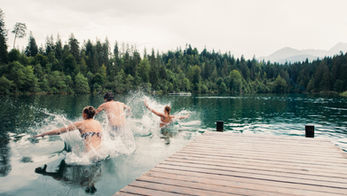
Snags and Submerged Objects
صحيفة وقائع السلامة #
16
Overview
Submerged objects include any matter, natural or man-made that is underwater and may or may not be visually identified from the surface.
A snag is a submerged object under the surface (typically a fallen or submerged tree).
Submerged objects
Submerged objects include any matter, natural or man-made that is underwater and may or may not be visually identified from the surface. Submerged objects increase the risk of a dangerous collision. The collision could occur between the submerged object and a watercraft, a water skier, a swimmer or someone who is entering the water.
Due to the nature of many inland water bodies, submerged objects may not always remain stationary. Currents will move submerged objects downstream. Swimming holes clear of submerged objects may rapidly change due to transitory submerged objects. This is important to remember in inland waterways, as many are surrounded by trees and vegetation which can be deposited into the water.
Snags
A snag is a submerged object under the surface (typically a fallen or submerged tree)
which has the potential to ‘snag’ or catch swimmers or vessels as they pass over it. In the majority of Australian freshwater, snags are particularly hard to see under the surface and present a very real risk to swimmers and other water users.
Strainers
Strainers are any fixed, or solid, objects in thewater course that allows only water to pass over, under, around or through it. The most common strainers are fallen trees, rock groins, farm fencing and even traffic guard rails. A victim or rescuer may be held against a strainer and drown.
Related Items
Explore deeper into our campaign messages to learn more




